 A photographic series entitled Pacific Light captures a spellbinding dance that begins when ink, paint and soap collide. Watch stunning color combinations puddle and swirl. Visual artist Ruslan Khasanov snapped gorgeous photos, but his video and GIFs (short for Graphic Interchange Format, a form of computer image that moves as soundless animation) are spectacular.
A photographic series entitled Pacific Light captures a spellbinding dance that begins when ink, paint and soap collide. Watch stunning color combinations puddle and swirl. Visual artist Ruslan Khasanov snapped gorgeous photos, but his video and GIFs (short for Graphic Interchange Format, a form of computer image that moves as soundless animation) are spectacular.
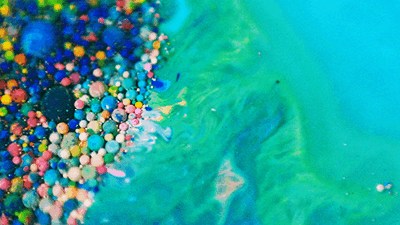 Khasanov was cooking when he noticed some interesting interactions between his oil and soy sauce. Tiny black beads of soy sauce formed at the bottom of his glass, roiling in an oily sea. He decided to experiment, substituting ink for the soy, next adding a bit of soap and some paint pigment.
Khasanov was cooking when he noticed some interesting interactions between his oil and soy sauce. Tiny black beads of soy sauce formed at the bottom of his glass, roiling in an oily sea. He decided to experiment, substituting ink for the soy, next adding a bit of soap and some paint pigment.
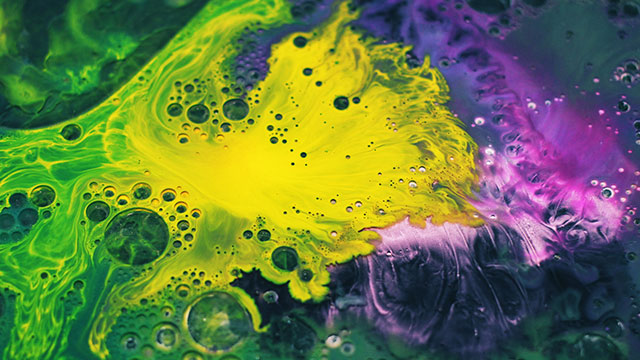 He observed that droplets “cluster like small planets pressed tightly against each other”, evoking the cosmos and the Big Bang. He recorded five hours of footage exploring “how flowed and mixed paint form stunning color combinations” around “planetary” clusters of oil, soap, water and other materials — a “game of colors”, as Khasanov described it to Wired.
He observed that droplets “cluster like small planets pressed tightly against each other”, evoking the cosmos and the Big Bang. He recorded five hours of footage exploring “how flowed and mixed paint form stunning color combinations” around “planetary” clusters of oil, soap, water and other materials — a “game of colors”, as Khasanov described it to Wired.
To see more photos and GIFs created as part of Pacific Light, head over to Khasanov’s Bēhance page.
The polluting problem with pretty soap beads:
Exfoliants in face soaps, body washes, toothpastes and other personal care products are teeming with abrasive microbeads, tiny bits of polyethylene plastic commonly used as scrubbing agents. “These beads wash straight down your drain after washing your face, and directly into your watershed,” according to plastic pollution watchdog 5 Gyres, “No sewage treatment system can capture them.”
Consider that fact in the water-starved Middle East, where advances in grey-water recycling are loudly applauded. If waste water treatment technology can’t separate microplastic from water, what’s the knock-on damage to plant and animal life consuming the recycled fluid, and what’s the damage to equipment it passes through?
Last summer, during a Great Lakes research cruise, scientists discovered huge quantities of the beads (broadly called microplastics); they’ll publish a peer-reviewed study about them later this year.
The Great Lakes hold a fifth of Earth’s freshwater, and now house billions of tiny plastic specks from degraded plastic litter, including ubiquitous microscopic beads.
Wildlife can ingest the particles, but the main threat of microbeads lies in their ability to absorb toxins from the water much the same as they grab on to pigment in Khasanov’s art project. These toxins can “biomagnify” as they move up the food chain, threatening humans.
Environmental groups have lobbied manufacturers to halt use of microbeads. According to Treehugger, Unilever, the Body Shop and Johnson & Johnson have pledged to phase out microbeads by 2015; Procter & Gamble plans to stop by 2017. In the meantime, though, 5 Gyres co-founder Anna Cummins says “there are no prospects” for removing microbeads from lakes or oceans. And that’s pretty ugly.
Images from Khasanov’s Bēhance page

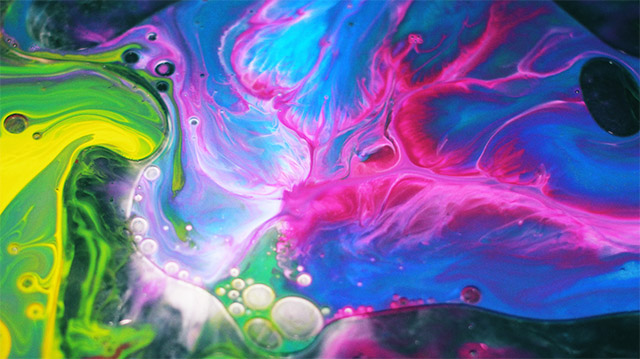

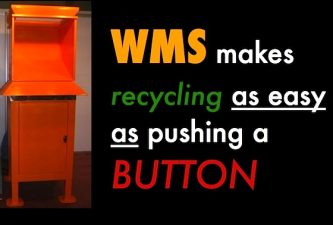
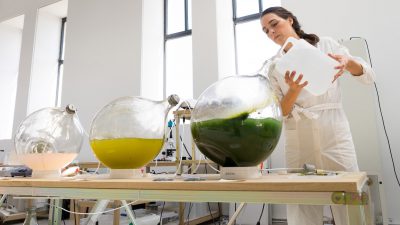
People are so addicted to the growing power of money to trap them in debt, they think that’s all they need to do to survive. But the Earth is not a bank, but a living biosphere that processes our growing mass of pollution by worsening storms like super typhoon Haian and super hurricane Sandy, and worse to come.